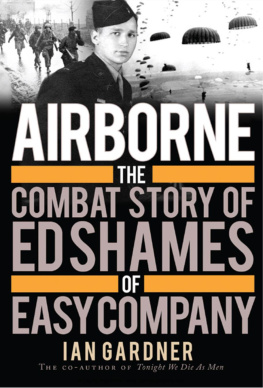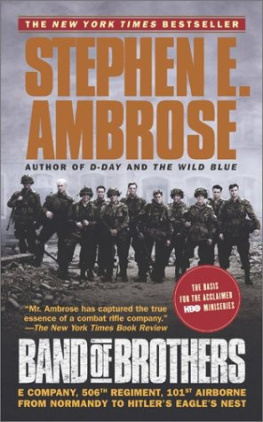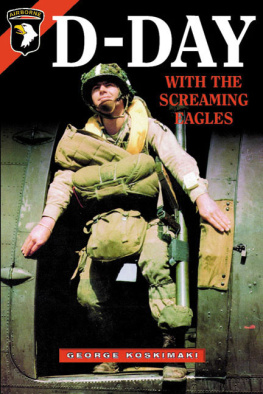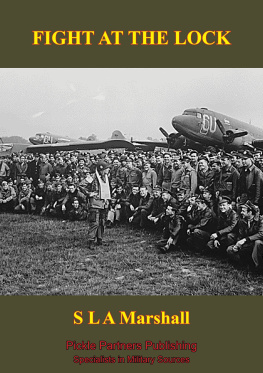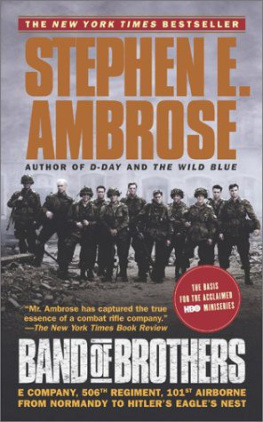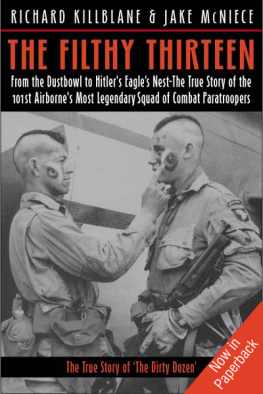
101 ST AIRBORNE
THE SCREAMING EAGLES IN WORLD WAR II

MARK BANDO

Z ENITH P RESS

In tribute to Maj. Richard D. Winters, one of many idealistic and brilliant troop leaders of the 101st Airborne in World War II and a man who has become an icon, symbolizing all the courageous warriors of the Screaming Eagle Division.
(Photo taken by Grant Berry, Veterans Day 2004, Media, Pennsylvania)
Acknowledgments
Searching long and hard for rare, unpublished photos has long been a significant part of my World War II history research. Ive always felt that a books photo content should be relevant to the written text, should consist largely of images the public hasnt seen before, and should contribute something of unique value to otherwise available historical publications. After my previous photo book for Zenith Press (101st Airborne: The Screaming Eagles at Normandy), I was surprised to discover that some readers still expect the oft-published and famous images that can already be found in other books. Not wanting to disappoint expectations, I sought a balance between classic, previously published 101st Airborne photos and numerous new, never-before-published images.
Within these pages, youll find the well-known classicsincluding the Ike/Strobel airfield photo, the image of Jim Flannigan holding a captured flag at Marmion, and the brick pile surrounded and surmounted by Pathfinders at Bastognemixed in with many remarkably clear and obscure photos, printed from the original negatives made by John Reeder (506th), Don Hettrick (377th), Frank Sheehan (101st Division Signal Co.), and many other World War II survivors of the great 101st Airborne Division.
Several personal friends of mine who collect 101st Airborne photos contributed images to this book. Among them: Paul Adamic, Kurt Barickman, Grant Berry, Mike Bigalke, Jim Bigley, Bob Carter, Gary Dettore, Michel deTrez, and Ron Tollison.
Nadine Wierzbowski-Field made a prodigious contribution of Signal Corps photos to this project from her late fathers voluminous collection.
As always with my 101st books, I want to acknowledge the official photographers of the division: Albert A. Krochka and Mike Musura, as well as Joe Gopher Sloan, who took Krochkas place as 501st photographer during Bastogne until the wars end. Captain Joseph Pangerl probably took as many 502nd photos as Mike Musura, and his contribution of numerous rare photos to this book is plainly evident. Many other individuals contributed photos and are acknowledged in the credit line of each photo. A number of veterans contributed stories to this work, notably Glen Derber, Don Hettrick, Emmert Parmley, and Lou Truax. Veterans who have mentored me across the decades and continue to do so include Frank Anness, Fred Bahlau, Carl Beck, Doc Brinkley, Don Burgett, Albert Hassenzahl, George Koskimaki, Dick Ladd, Jim Martin, Bob Sechrist, and Don Zahn.
The Don F. Pratt Museums historians and Courtnay Weisberg-Johnson, Chip Cifone, and Dudley Cone also contributed photos, obscure facts, and/or historical documents. Marcel Zwaarts helped provide German unit identification. Most of the maps and diagrams in this book were drawn by former USMC mapmaker Tom Houlihan, while information regarding current landmarks near Best and Sint Oedenrode, Holland, were provided by Dutch historian Jurgen Swinkels.
My wonderful wife, Candace Ann, continues to be beyond helpful to me when it comes to photo printing, setting up and transmitting computer files, and proofreading both text and captions. She is a treasure and helps me in many ways. As usual, my friends at the Livonia, Michigan, Kinkos store, Michael C. Kenney and Thomas Malinky, have been helpful with photo duplication throughout this project. Hite Photo in Bloomfield Hills, Michigan, has also done valuable work printing black and white images from vintage negatives.
Many new friends have come into my life in recent years to join ranks with my older friends, each of them inspiring my writing efforts in their own way. People such as Judy Andersen, Ryan Baker, Bill Barksdale, Joe Beyrle II, Tessa deJong, John Fink, Brandon McMorries, Kristina McMorries, Charlie Newsome, Mr. and Mrs. Jim Osborne, Mark Patterson, Bob Pesti, Mark Piszcatowski, Jake Powers, Rich Riley, Jason Walcott, and Terry Webb. All these and many others, including my jump brothers on the World War II ADT, have each touched my life and inspired me in some significant way to keep writing. Thank you all for your support and friendship, which is more valuable than material riches.
During research for this book, I logged my nine hundred eighty-eighth interview with a World War II Screaming Eagle (my first took place in 1968). It is sad to see the ranks of World War II veterans thinning at a rate of nearly a thousand a day. But while we can, it is our privilege to pay tribute to these epic warriors who boldly dropped from the sky into the midst of a formidable enemy. They were indeed the vanguard of freedom in the greatest war of the twentieth century. All the Screaming Eagles, living and dead, are our National Treasure. I hope this pictorial tribute will do them justice.
Mark Bando
Detroit, Michigan
January 2007
CONTENTS
CHAPTER 1
TRAINING
AND
MANEUVERS
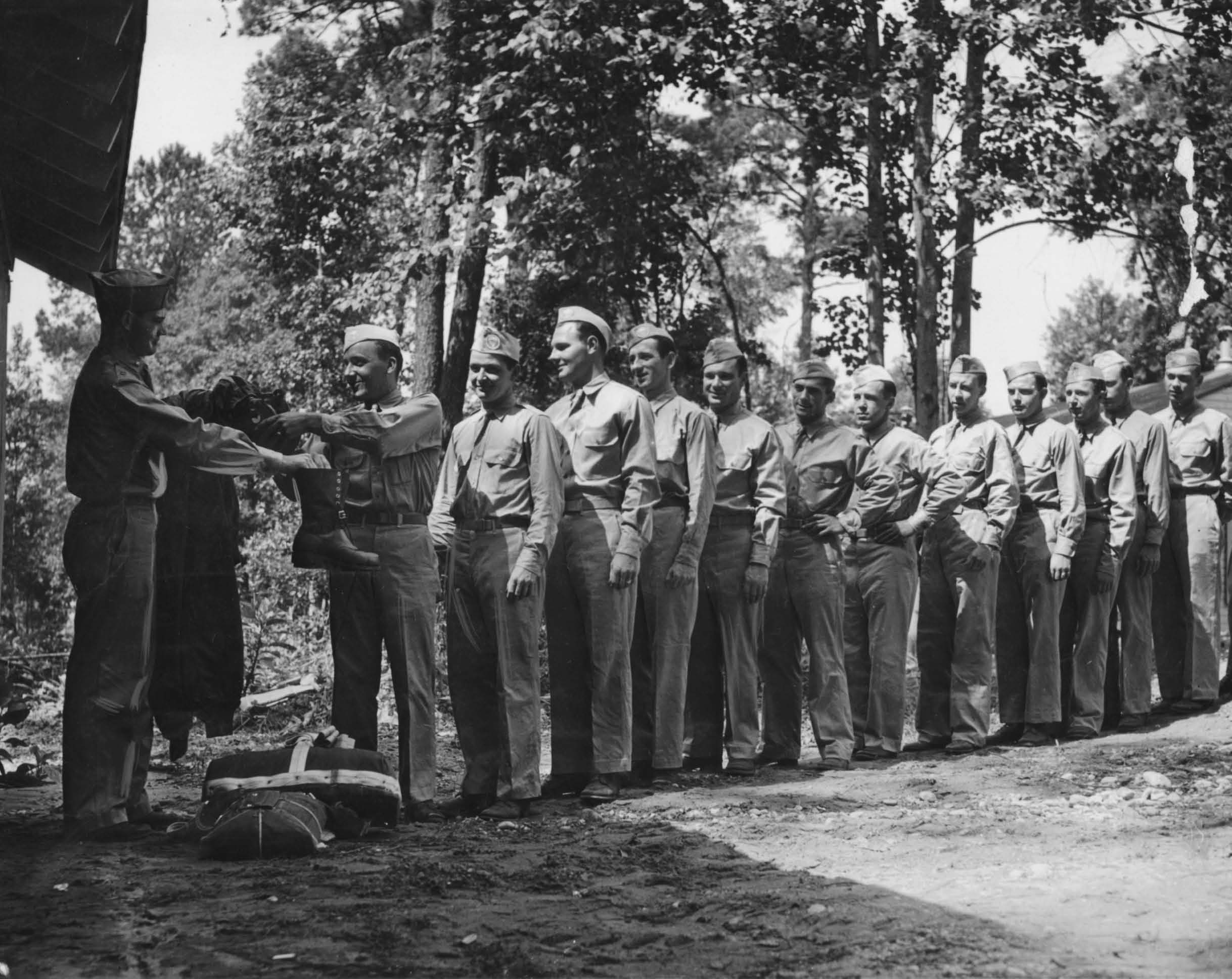
Benjamin Franklin predicted airborne warfare long ago, writing that ten thousand men descending from the clouds might not in many places do an infinite deal of mischief, before a force could be brought together to repel them. Franklins eighteenth-century idea envisioned two men each in five hundred balloons as a means of deployment long before airplanes or parachutes became a reality. It was perhaps fitting that the first successful airplanes would be tested, invented, and flown by this visionary founding fathers countrymen.
The very first use of parachute jumpers as soldiers was slated to involve U.S. infantrymen of the 1st Division as early as 1918, but the armistice ending World War I forestalled that proposed mission. American military parachutists would eventually be deployed in combat when the 509th Parachute Battalion dropped into North Africa in 1942.
In the interim years, parachuting had mostly been confined to amusement rides at worlds fairs and stunt descents at air shows. Despite small-scale experiments in the late 1920s, the U.S. military didnt take another serious look at the potential of deploying armed parachute forces until the Russians made mass drops of paratroopers in the late 1920s, the U.S. military didnt take another serious look at the potential of deploying armed parachute forces until the Russians made mass drops of paratroopers in the late 1930s.
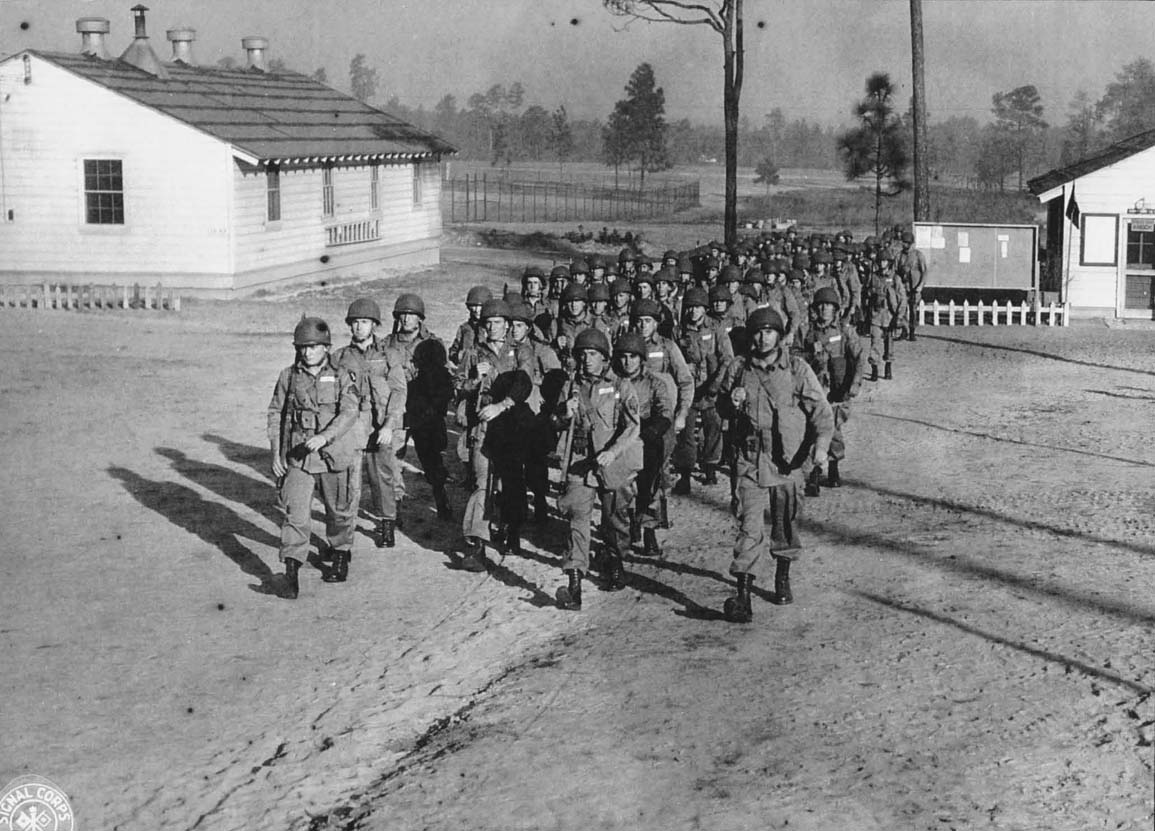
The 502nd Parachute Infantry Regiment began in 1941 as a battalion. It was not upgraded to regimental size until August 1942. When the 101st Airborne Division was activated, the 502nd became the original parachute infantry regiment (PIR) of the division. In this battalion-era photo, new arrivals, mostly men from Ohio, are being issued jumpsuits on June 20, 1941. Two of them, identified as Rigsby (fifth from right) and John Q. Young (far right), later became members of Company G in the 502nd Regiment. Rigsby was killed on a night patrol in Hollandsoon after jumping therein September 1944. Rigsbys cousin, Gene Baker, was a platoon sergeant in the same company. Acme Newspictures, Atlanta, GA H/502 PIR marching at Ft. Bragg, North Carolina, in 1943. In the right foreground is their company commander, Capt. Cecil L. Simmons, also known as Big Cec. Simmons had been a uniformed police officer in Grand Rapids, Michigan, and a member of the Michigan National Guard before entering federal service. Also recognizable in the photo are Sgt. Elden Dobbyn and Sgt. J. B. Cooper. The troopers have been issued M42 jumpsuits with white nametapes and are carrying old-style gas masks slung under their left arms. Newer assault-type gas masks were issued for combat jumps into Normandy and Holland.
Next page


